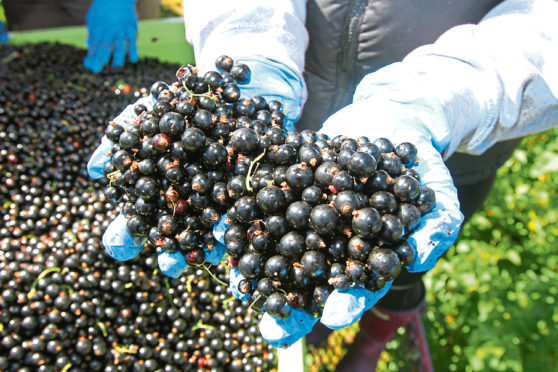British blackcurrants could become a casualty of warmer winters as they may not get enough chilling to produce optimum yields and fruit quality.
That is the message being delivered today to the British Ecological Society in Birmingham based on research at the James Hutton Institute (JHI) and Dundee University.
The crop, which is worth about £10 million a year to the UK economy, is grown by a small number of growers, mainly for processing as an ingredient and juice for brands such as Ribena.
Blackcurrants require a period of chilling before they start to grow in spring in order to reduce the risk of frost damage to new buds and ensure that buds burst rapidly in the spring and flower together, when pollinators are abundant. However, JHI researchers have highlighted that milder winters may cause crops to flower later in the year, produce fewer fruits, and result in a reduced plant lifespan.
Dr Katharine Preedy from Biomathematics and Statistics Scotland said the effects of milder winters were already being seen in the crop.
“Blackcurrants are like the canary in the mine. If we can understand what they need in a changing climate, we can apply our knowledge to similar crops like blueberries, cherries, apples and plums,” she said.
The conference will hear that variety choice and genetics will be key to overcoming the challenges of climate change.
The ecologists have carried out controlled temperature experiments on 20 different blackcurrant varieties and found that each variety preferred different levels of chilling.
Some were also able to compensate for warmer winter temperatures if they were chilled for long enough, while for other more sensitive varieties, longer chilling periods did not compensate for being less cold.
The differences are the consequence of varieties evolving in different climatic regions or are the result of selective breeding over the years.
Study collaborator Professor Hamlyn Jones from Dundee said: “If we can understand this, farmers can select varieties based on the climate and conditions in which they are going to be planted, and breeders can develop varieties that are more resilient to both warmer winters or periods of extreme cold”.
Dr Preedy added: “In the future, we hope to identify genetic markers associated with the ability to withstand variable winters, so we can rapidly breed new varieties of blackcurrants.”
